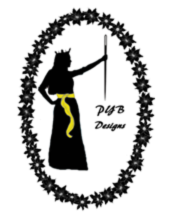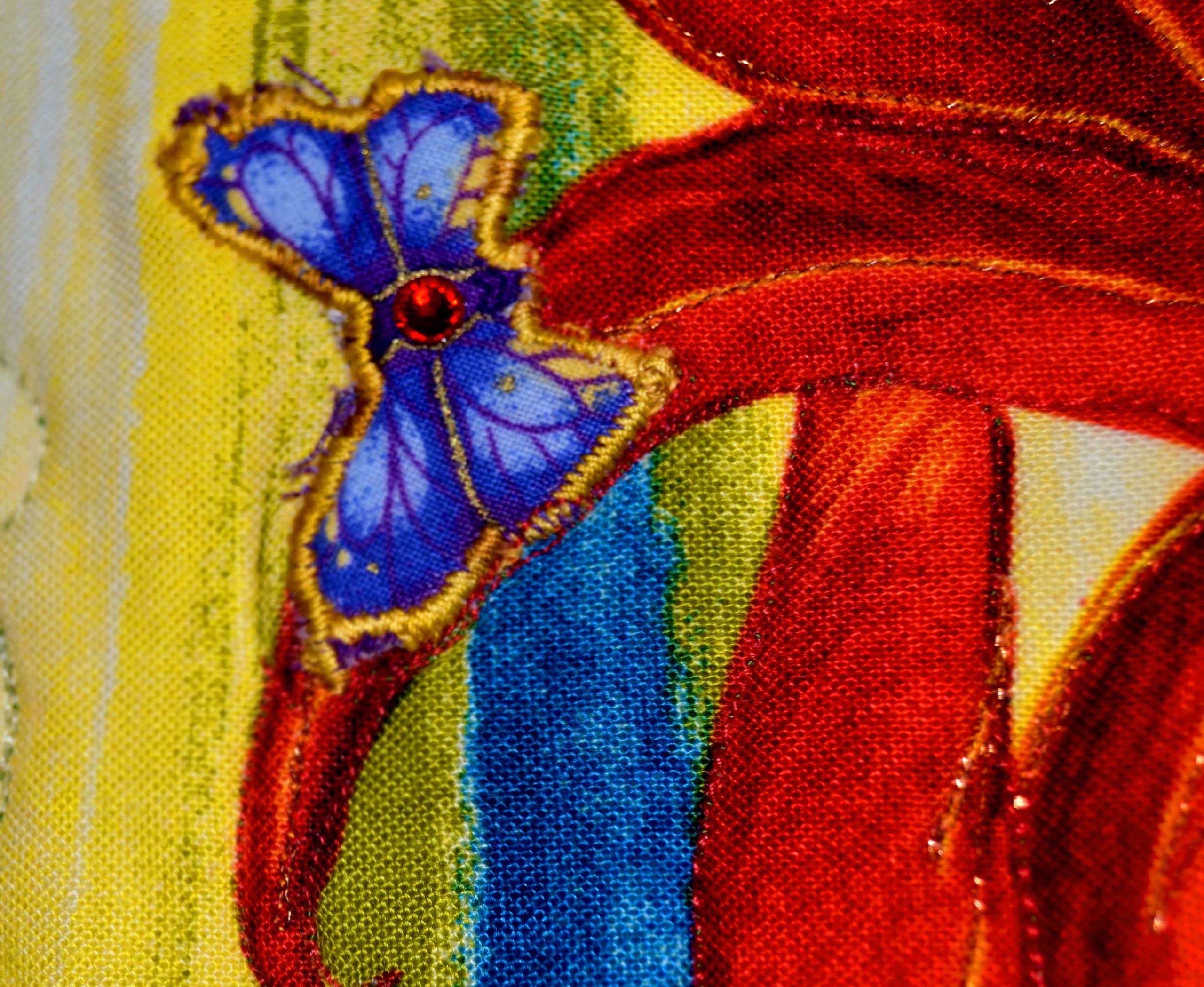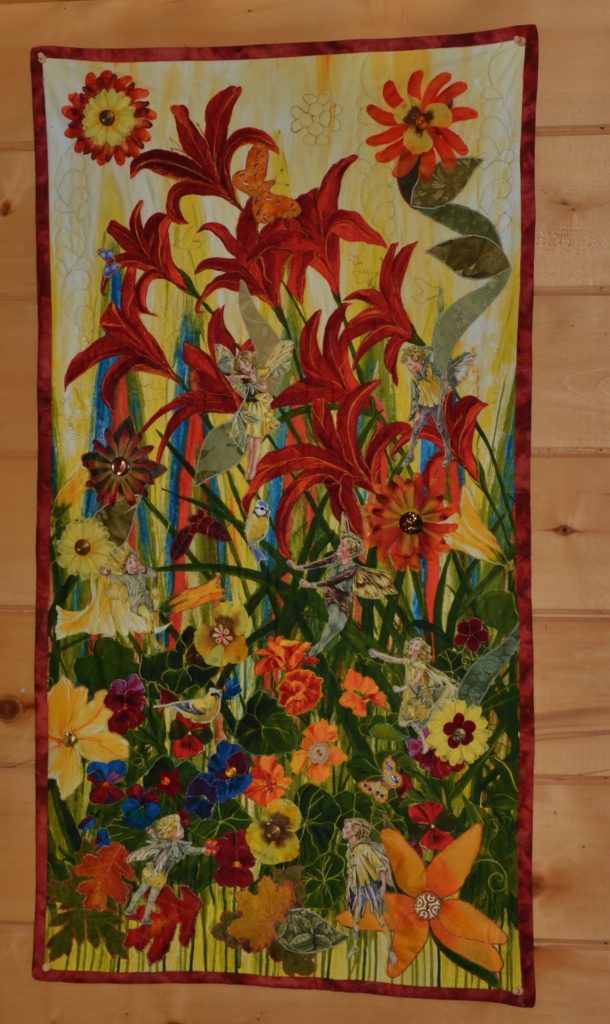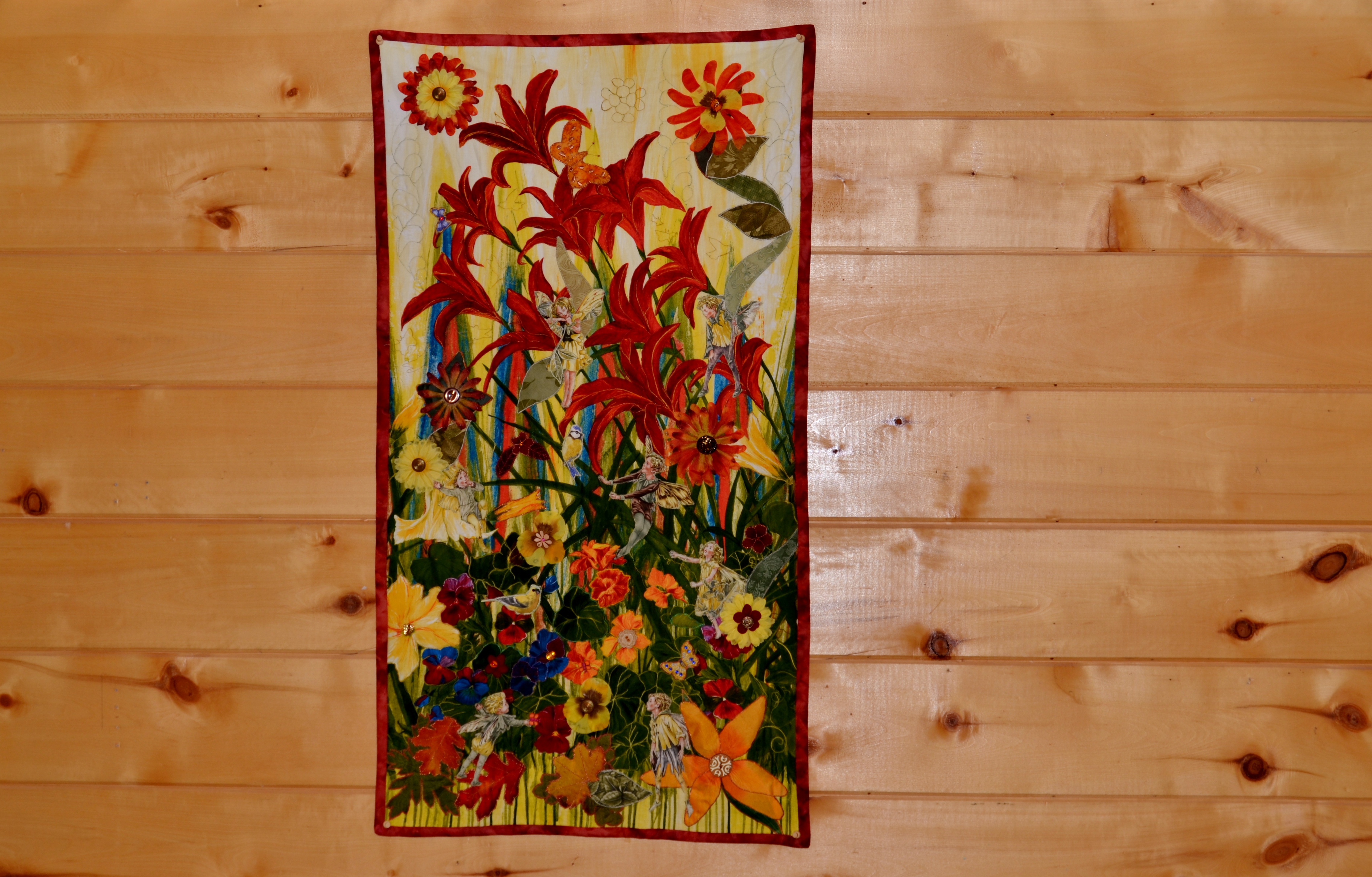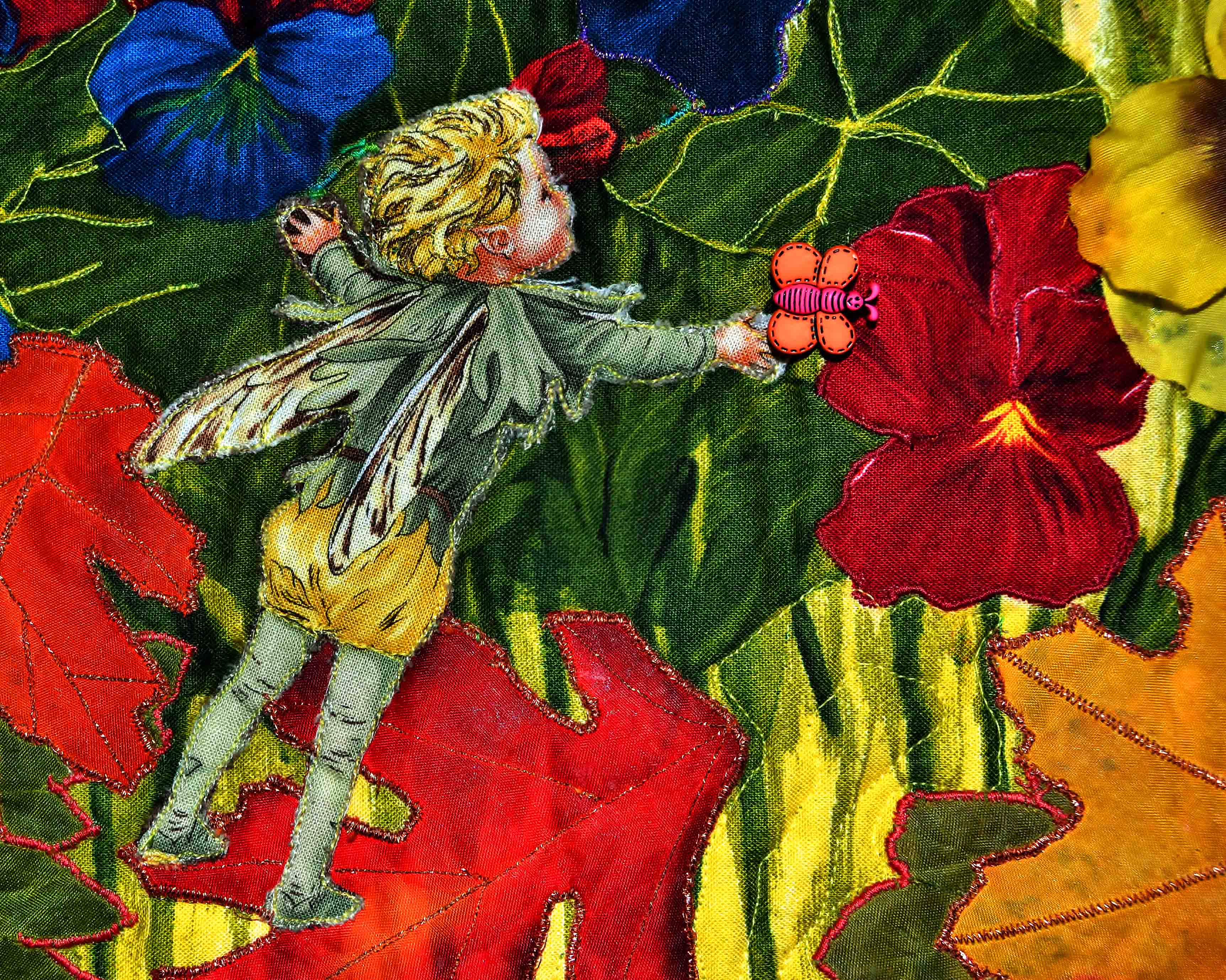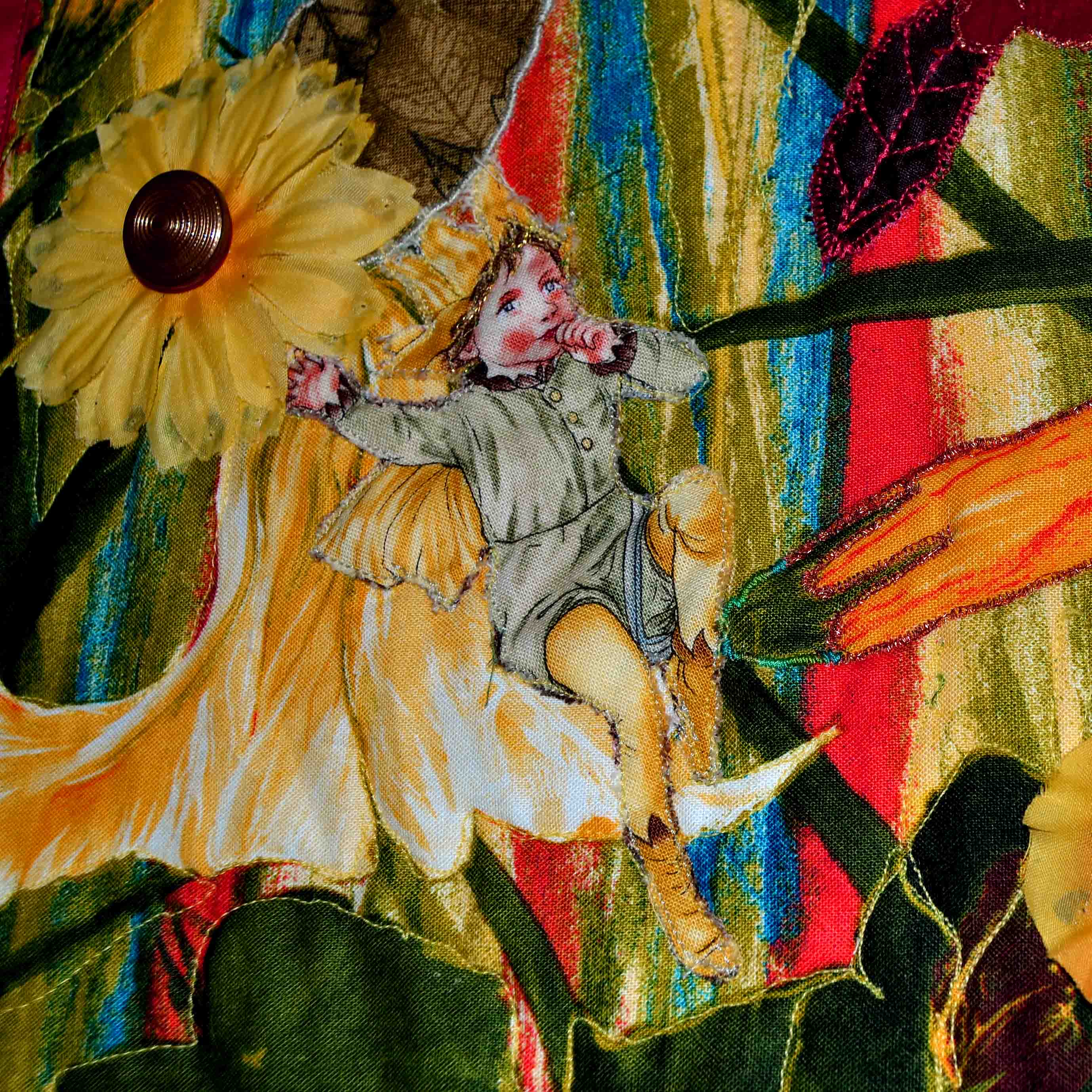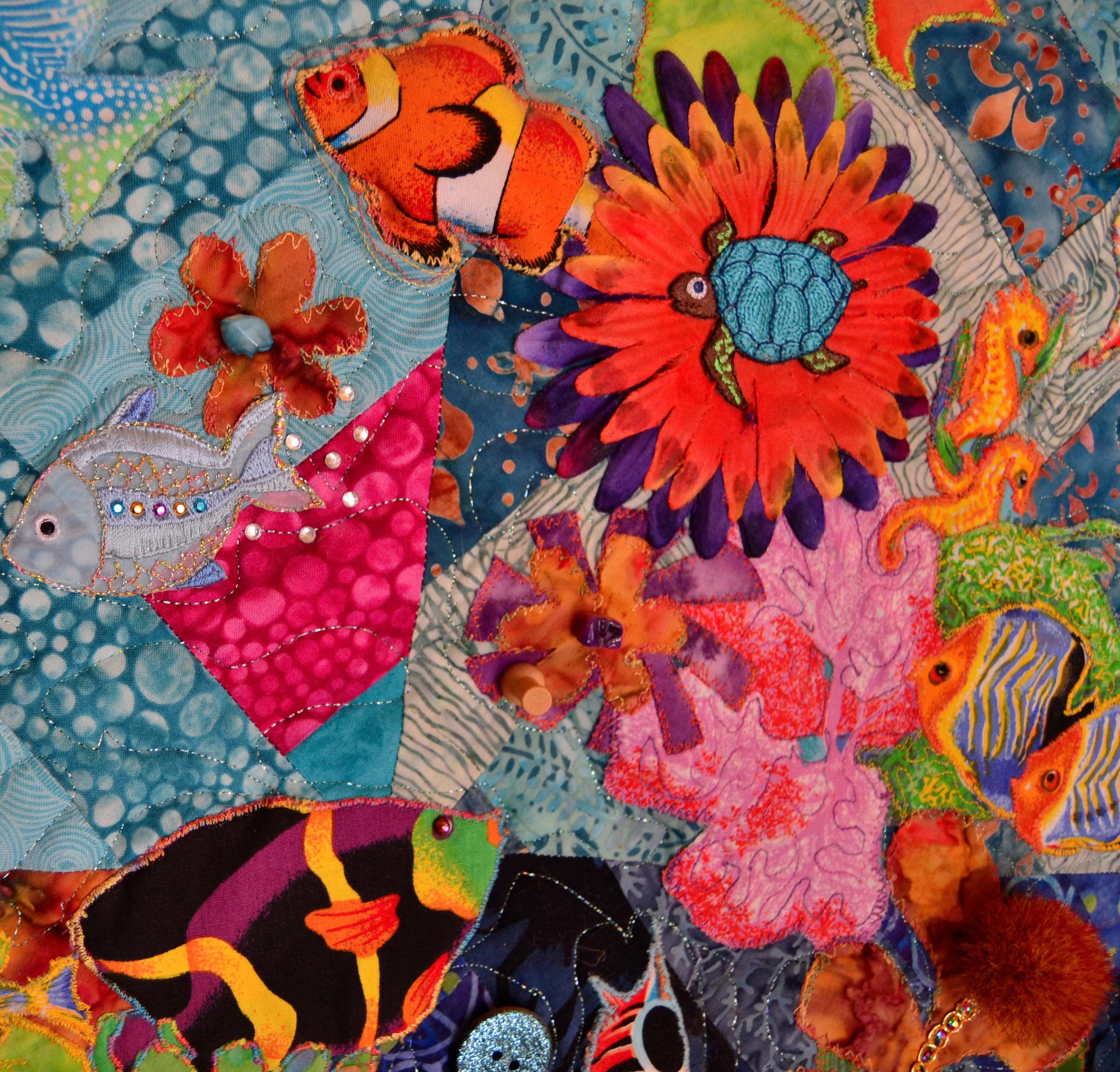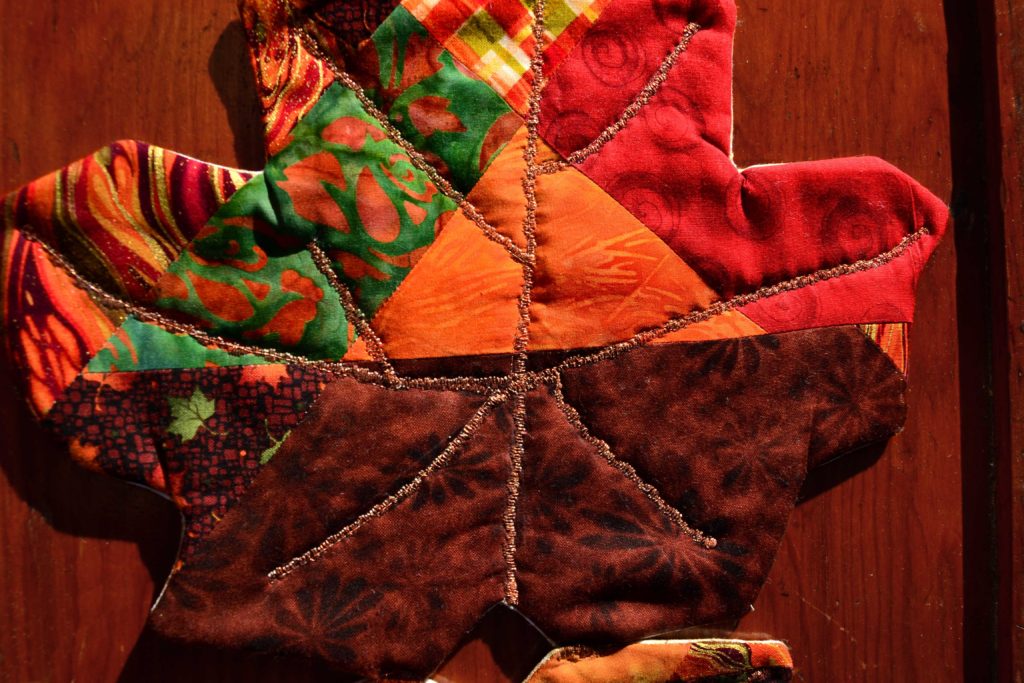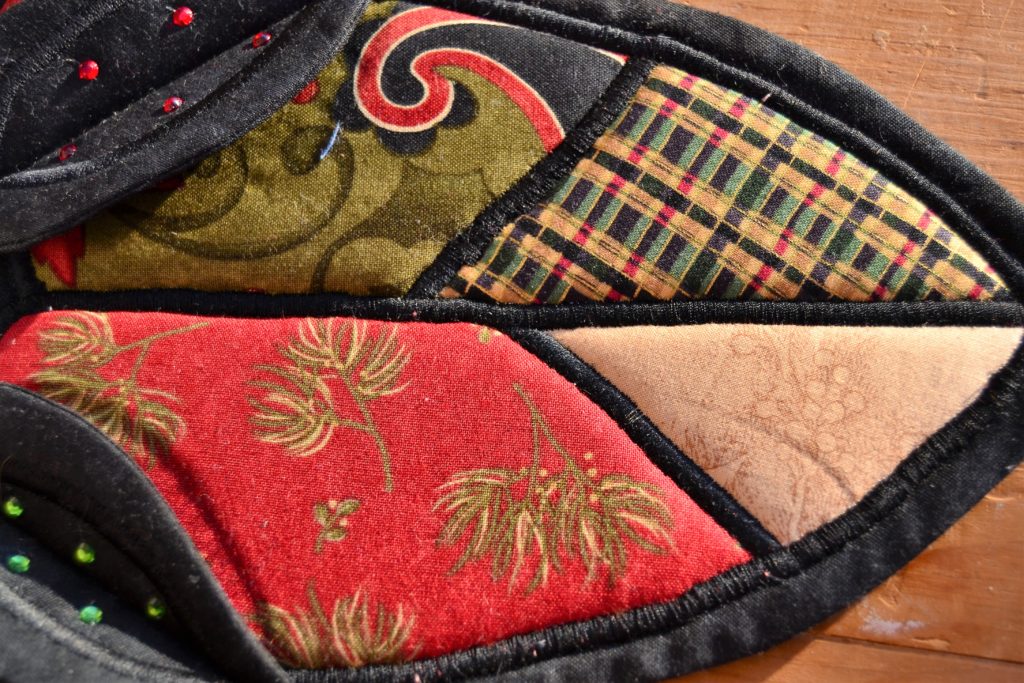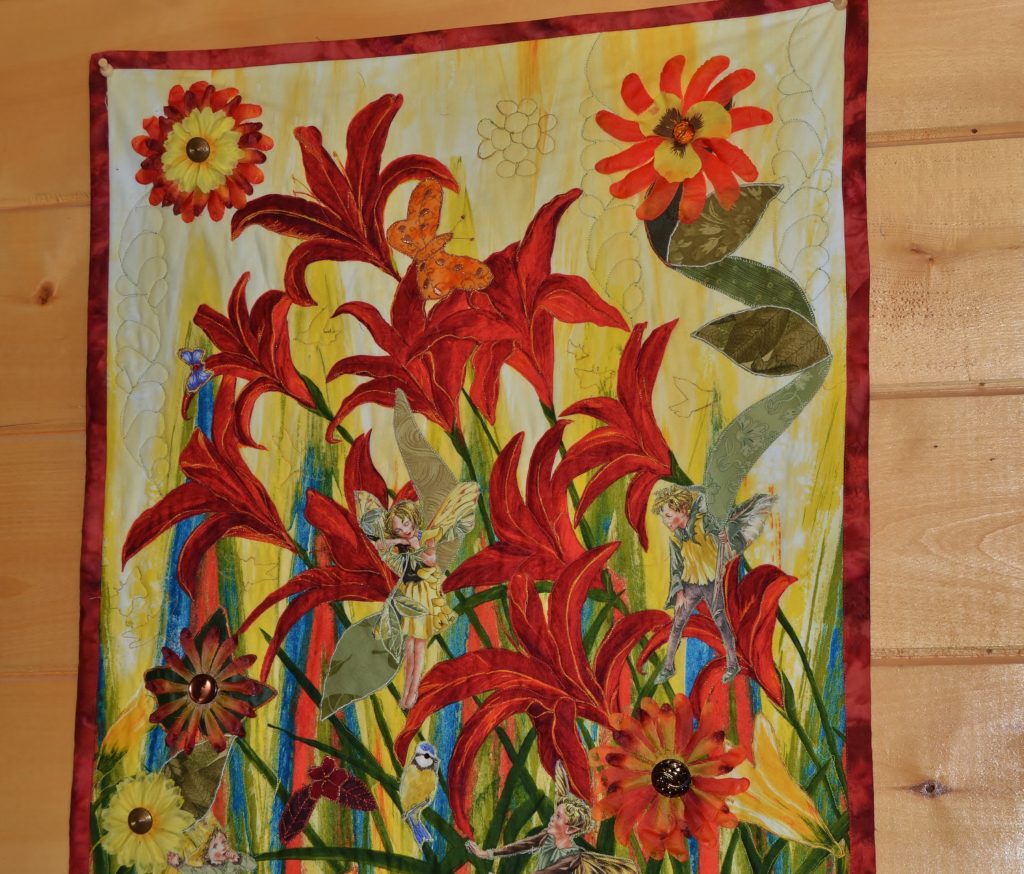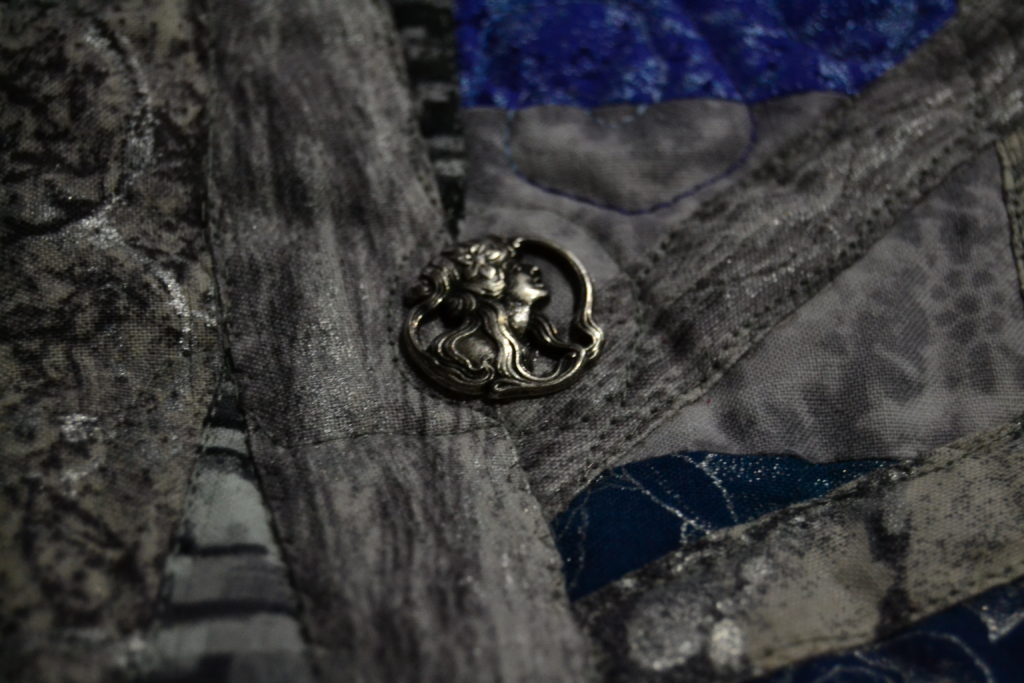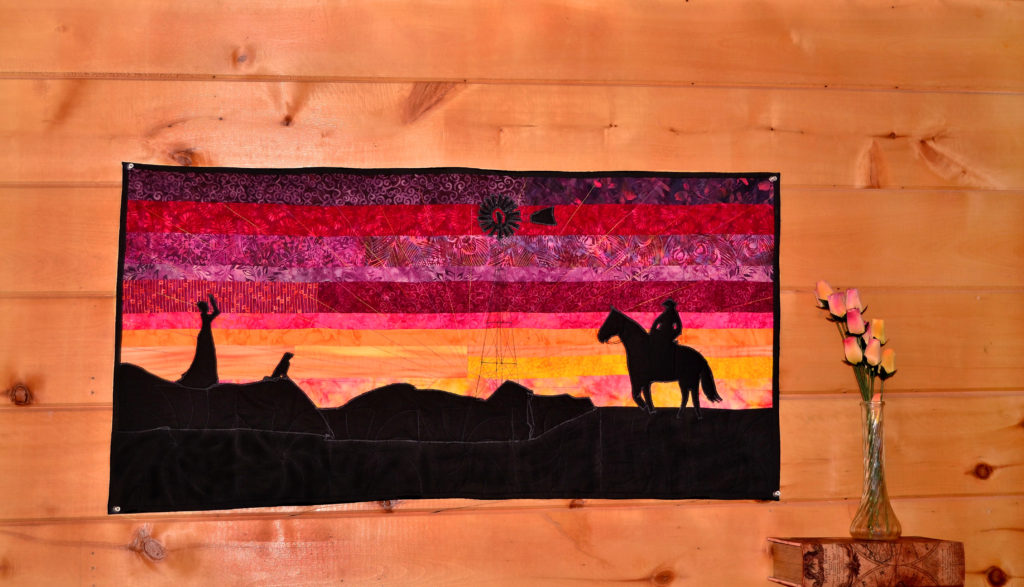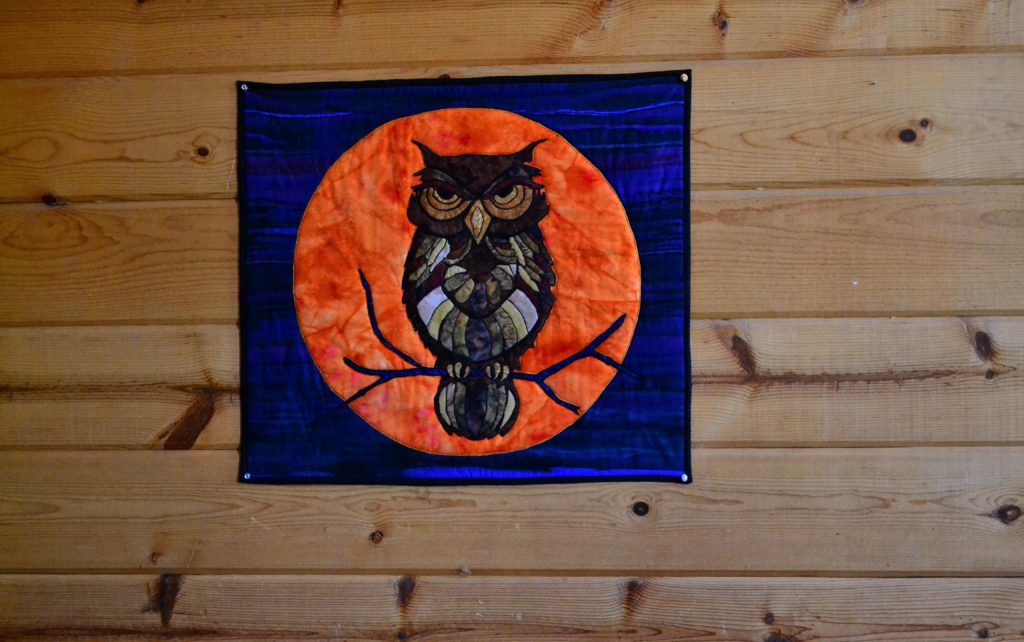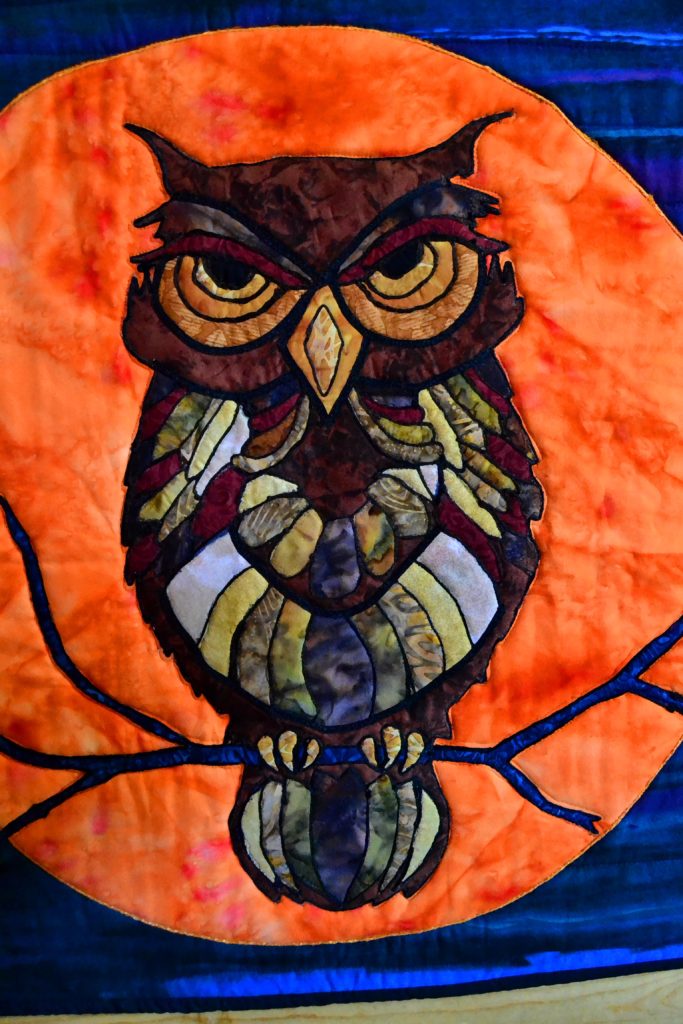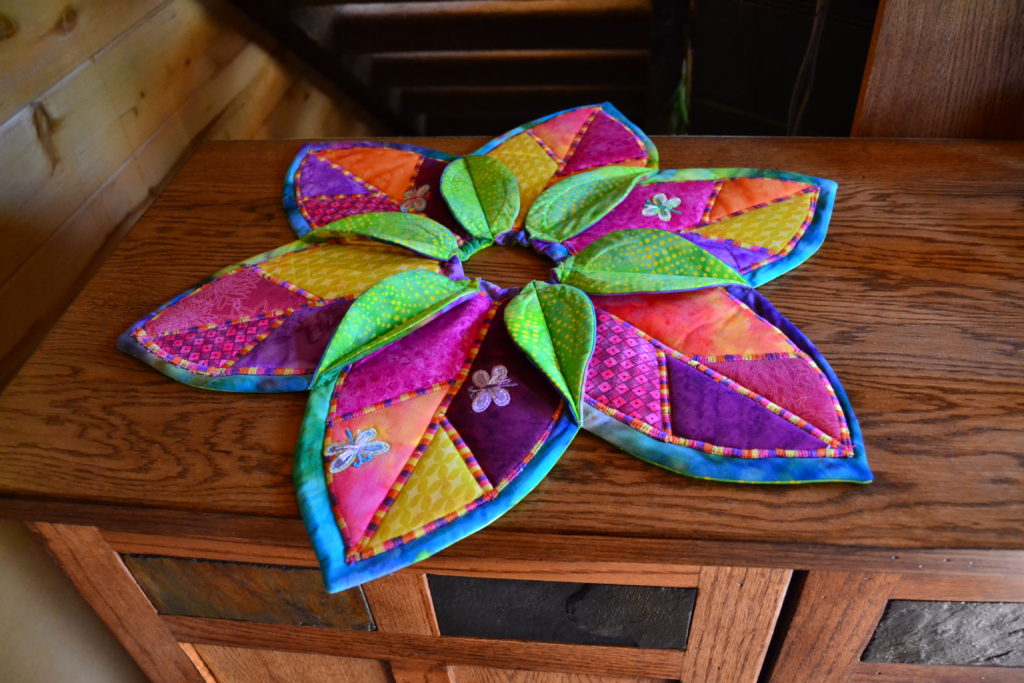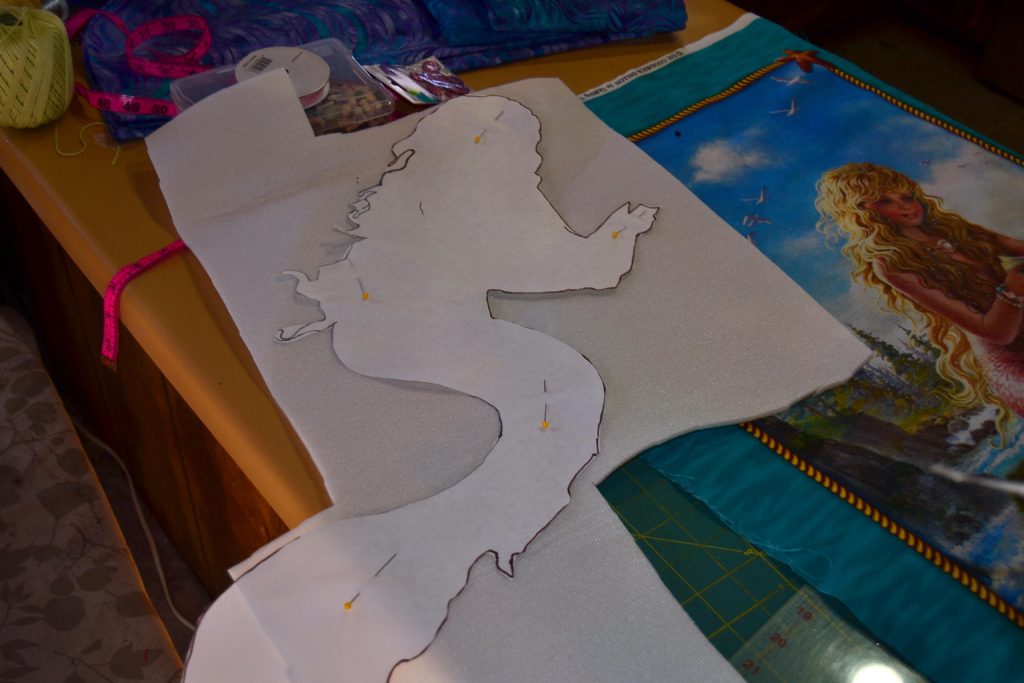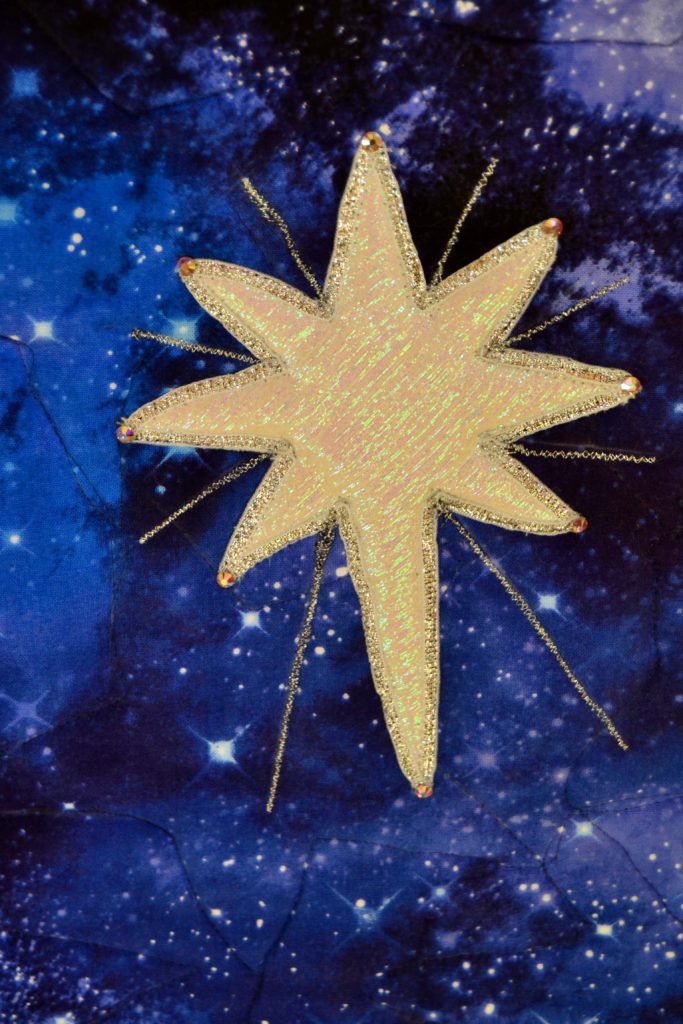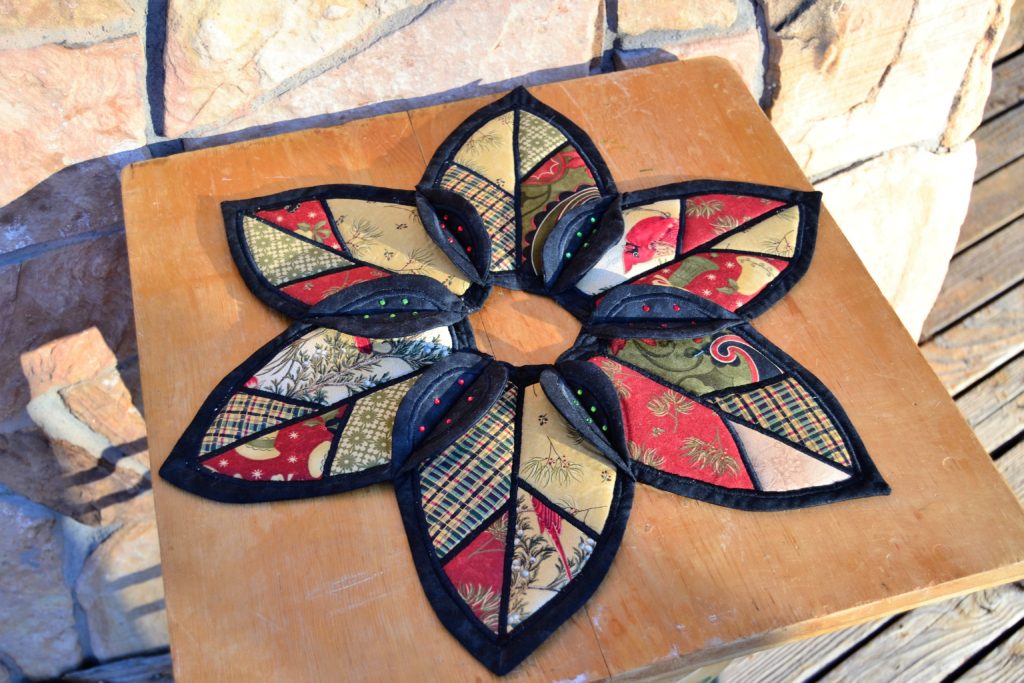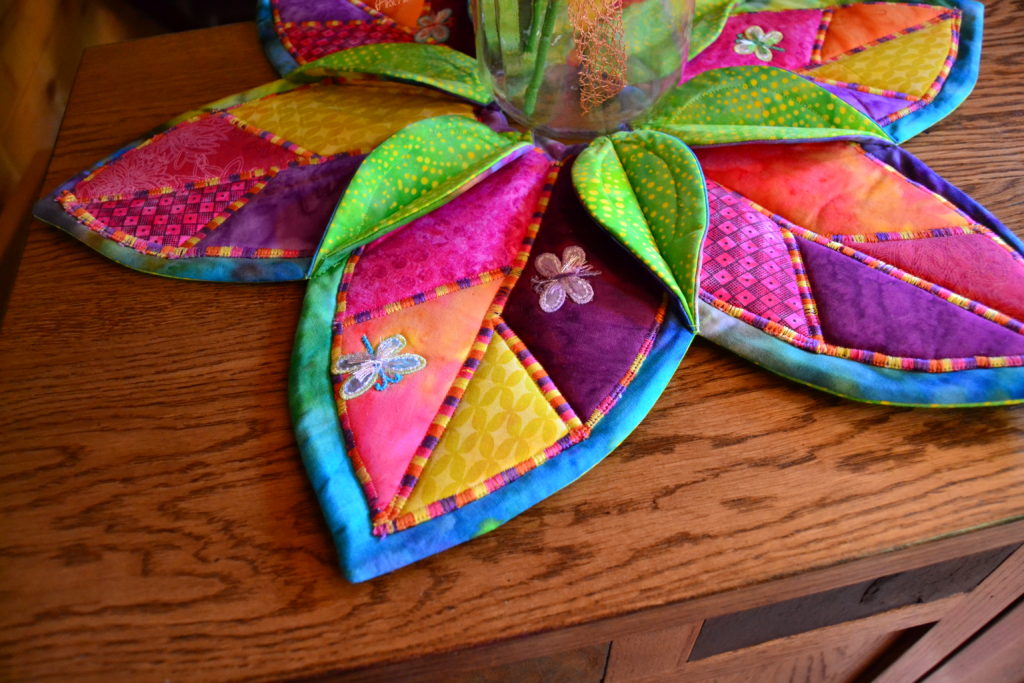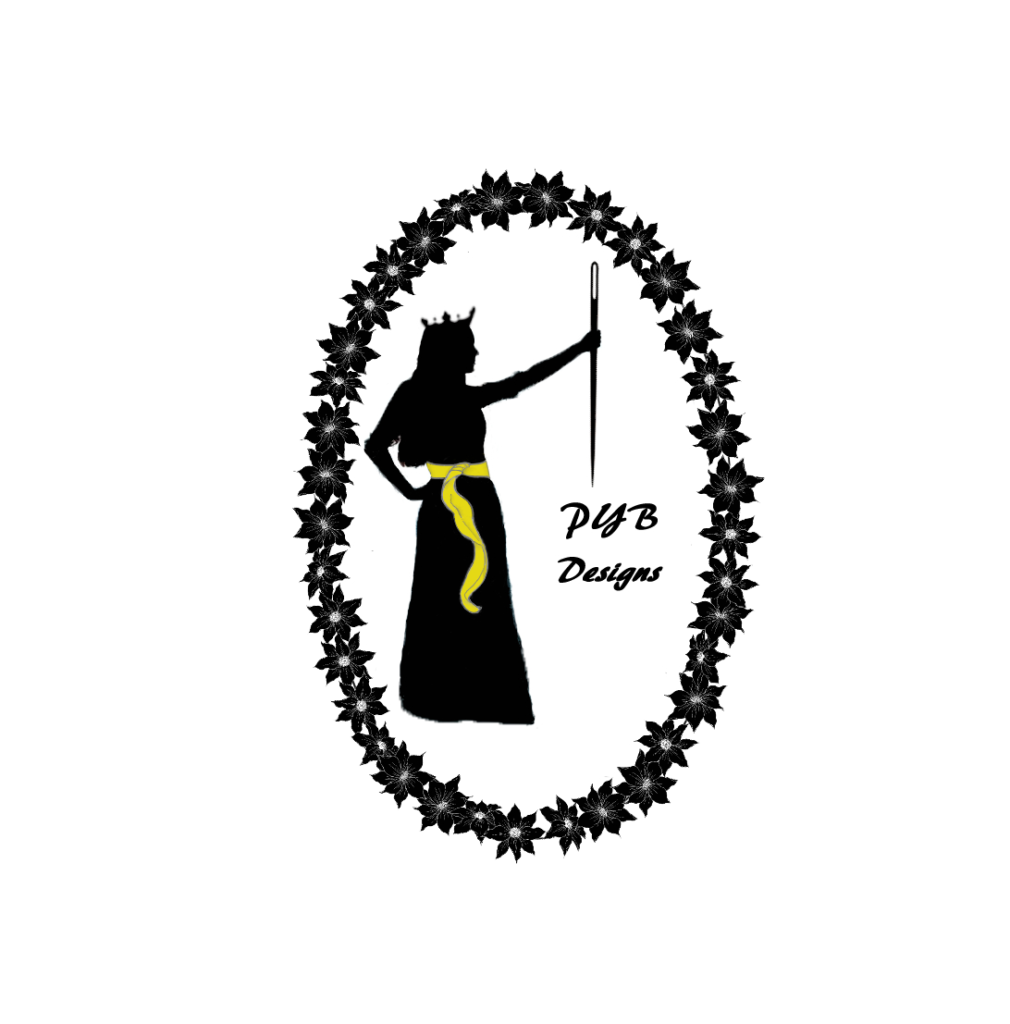
Trapunto is an Italian quilting word that means “putting more batting behind some design elements in your project than others,” which effectively selectively pops-up your quilting designs. You can see why we refer to this design skill as trapunto – it’s much shorter in Italian!! Unfortunately, linguistics alone does not make this technique any shorter in execution.
Back in the early days of my quilting journey I was fascinated by the look of trapunto because the extra batting seriously intensifies the 3-D effect of the design it lives behind and makes for a very elegant looking finished project.
Unfortunately, achieving this effect is EXTREMELY time-consuming and to me anyway – off-putting.
Our updated, time-saving trapunto techniques allow for multiple fantastic projects – some of them TOTALLY unique…
The Hardest Way to Selectively Pop-Up Your Quilting
Suzanna and I decided to try the trapunto technique on a wall panel we named ‘Fairies in my Garden’, a beautiful piece that depicts 7 pale green fairies playing in a bed of autumn-ish colored tiger lilies.
We wanted the tiger lilies to pop more than the surrounding flora & fauna and certainly more than the fairies, since everyone knows that fairies are extremely difficult to see in the real world! Our solution to popping out the tiger lilies – trapunto. It’s a great technique with a very simple concept:
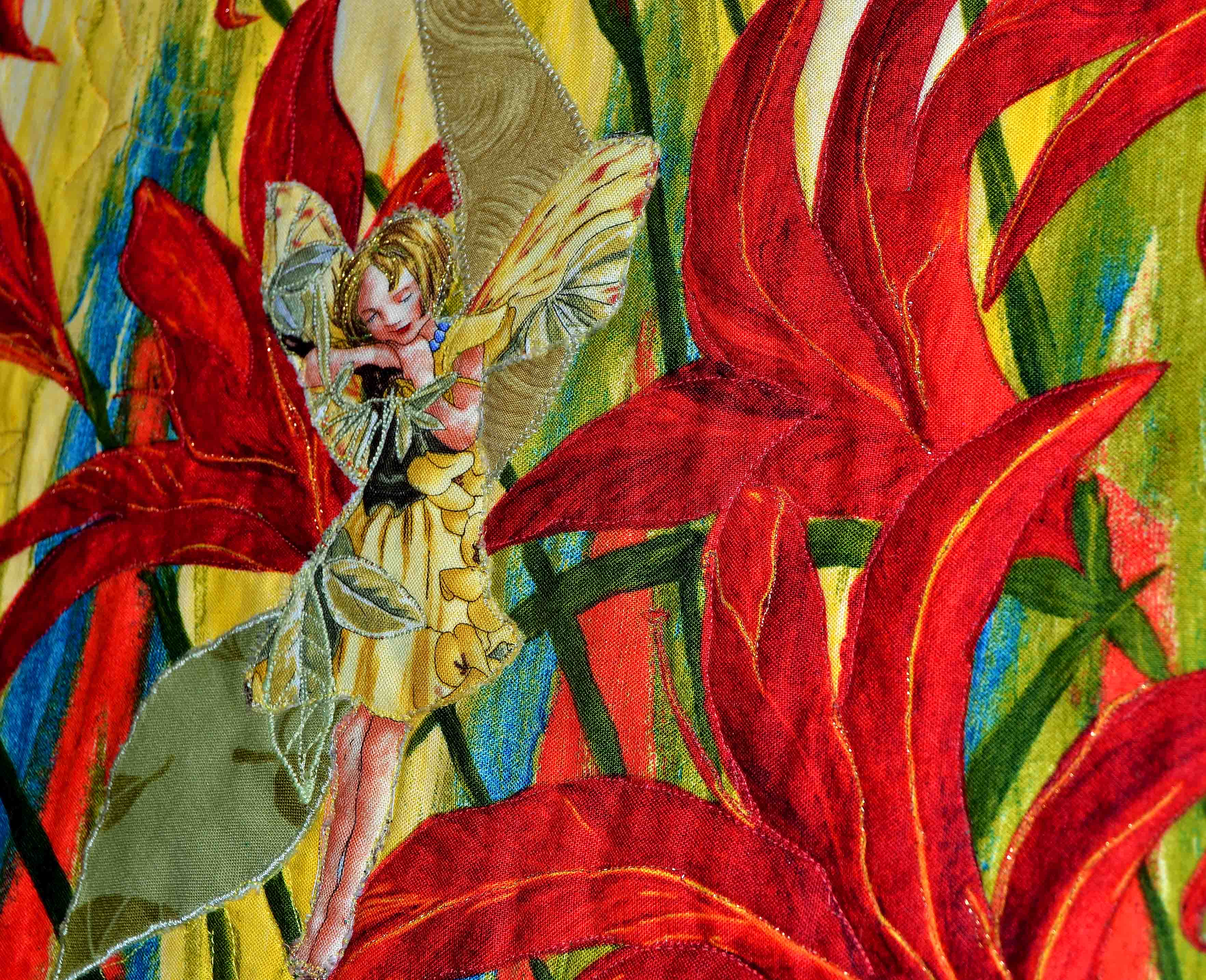
- You place batting behind your project and then quilt around only those elements that you want to ‘pop up’…
- When you have those elements quilted, you turn the project over to the back and carefully trim away any batting that is not directly behind your chosen elements.
So simple, yet so extremely tedious – not to mention time consuming – and a waste of perfectly good batting.
Suzanna spent hours with a small pair of embroidery scissors, carefully trimming away any excess batting. As I watched her I decided that there had to be a bigger, better & faster way to do this. And there was!
Developing a Simpler Method – the Princess YellowBelly Way
Naturally, I decided to eliminate the trimming away process altogether.
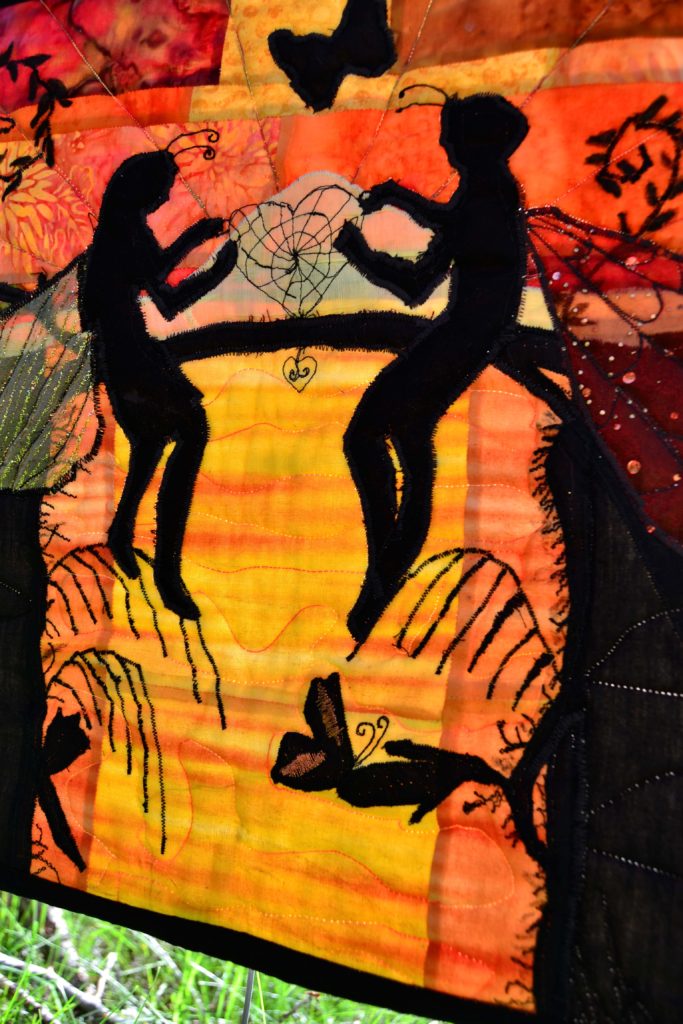
First I decided which elements I wanted to ‘pop up’ and then I taped the front of my project onto a large window. This makes it relatively easily to see through.
Then I would layer paper over this and trace the elements I wanted to selectively pop-up, making sure to label each shape as I traced it. It’s quite amazing how shapes very often don’t look like the object they are.
I would then cut out the shapes from the paper and then cut them out of the batting.
Using basting spray and a hot iron to hold the batting shapes in the right places on my project, I would then proceed to quilt them lightly along the outside edges.
Note:
The more heavily you quilt a design, the flatter it becomes – so, if you want a design to ‘pop’ only quilt around the outside edges the first time around.
Once all of my batting shapes were secured, I’d use basting spray over the entire back of the project and baste a layer of batting over the entire back of my project. This effectively removes all potential wrinkles and pleats from the shaped batting pieces.
Then I’d spray more basting spray over this layer and then lay down the backing fabric over top of this. A hot iron works great with basting spray to remove all wrinkles.
Finally, I’d quilt as desired – making sure to leave my double-batting design elements as lightly quilted as possible.
Trapunto Light – The Quickest & Easiest Way to Selectively Pop-Up Your Quilting
Wah-la! Trapunto – quick and easy, or, as I like to call it – ‘Trapunto Light’! The main dragon on my Dragon Quilt was done this way.
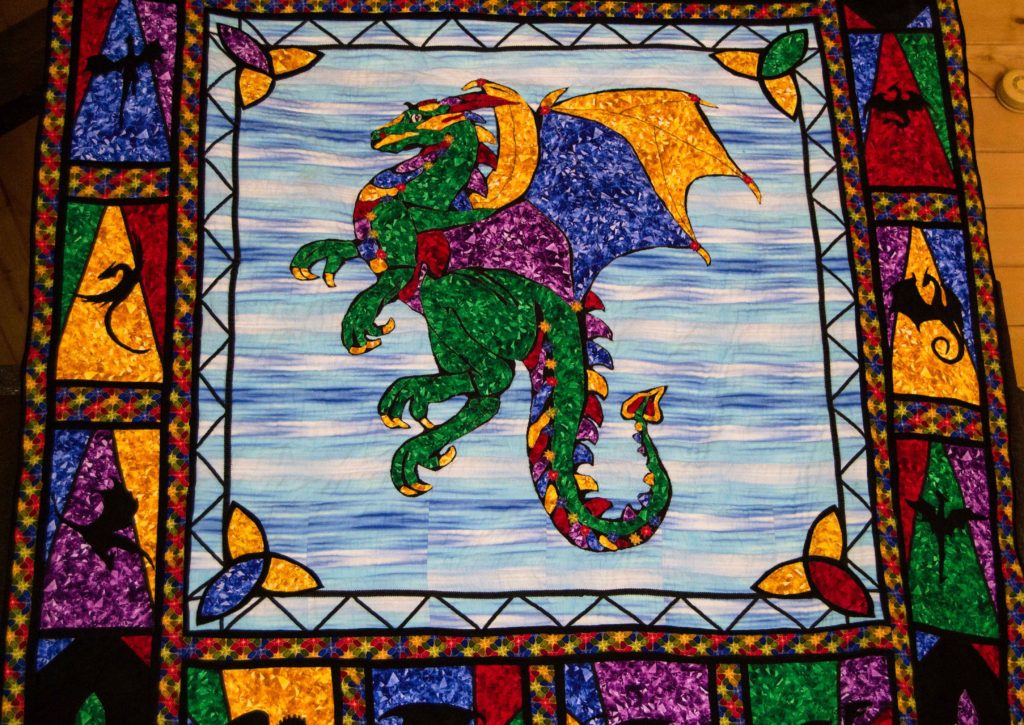
After I had used this new technique a number of times I found that wonderful new product – Bosal-n-R-Foam. I actually bought the foam because I was designing a media satchel for the girls’ and the diaper bag pattern I was using as my starting point required this stuff.
As I sewed with it I found out 2 things:
First, keep it out of the seams, and secondly, pop-up foam is much thicker than batting and when you sew enough of it into something (like a media satchel), it will actually stand up on its own!
You can bet by the time I was finished with those 2 satchels, I had visions of trapunto dancing in my head, but this time, instead of Trapunto Light I was envisioning:
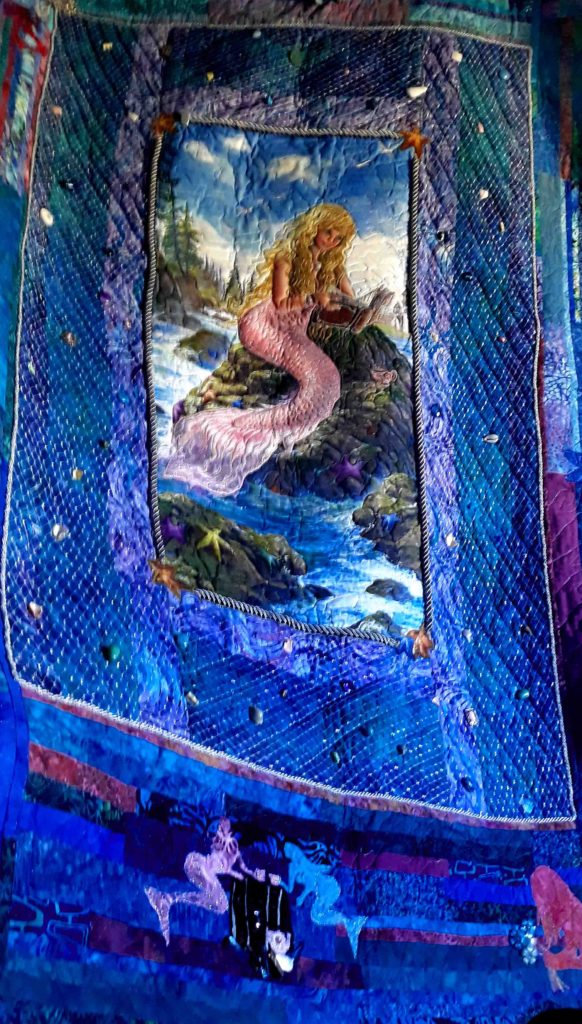
Trapunto on Steroids! The Most Striking – Easy – Way to Selectively Pop-Up Your Quilting
You guessed it. One layer of foam is like 6 layers of regular Warm and Natural cotton batting stacked together, so you get a lot more bang for your Trapunto buck when you use foam behind the design elements you need to selectively ‘pop-up’ your quilting designs and projects.
This is what I did behind the central mermaid in my ‘Ocean Maidens’ quilt. As well as the book she’s reading and the starfish around her tide pool. This striking, and fairly easy, technique made a HUGE difference to how much they popped out of the panel.
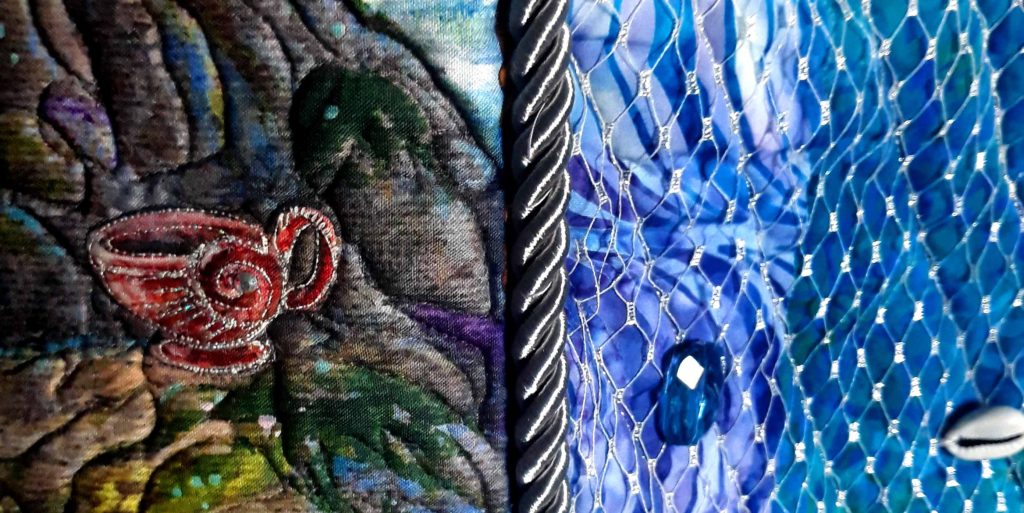
Never-Ending New Applications
I was delighted by the result of this experiment, and continued using this method, until one day another idea came floating into my head.
- Does the foam ALWAYS have to be behind the design element?
- What if I want to add another design on top of the main design and really make that ‘pop’?
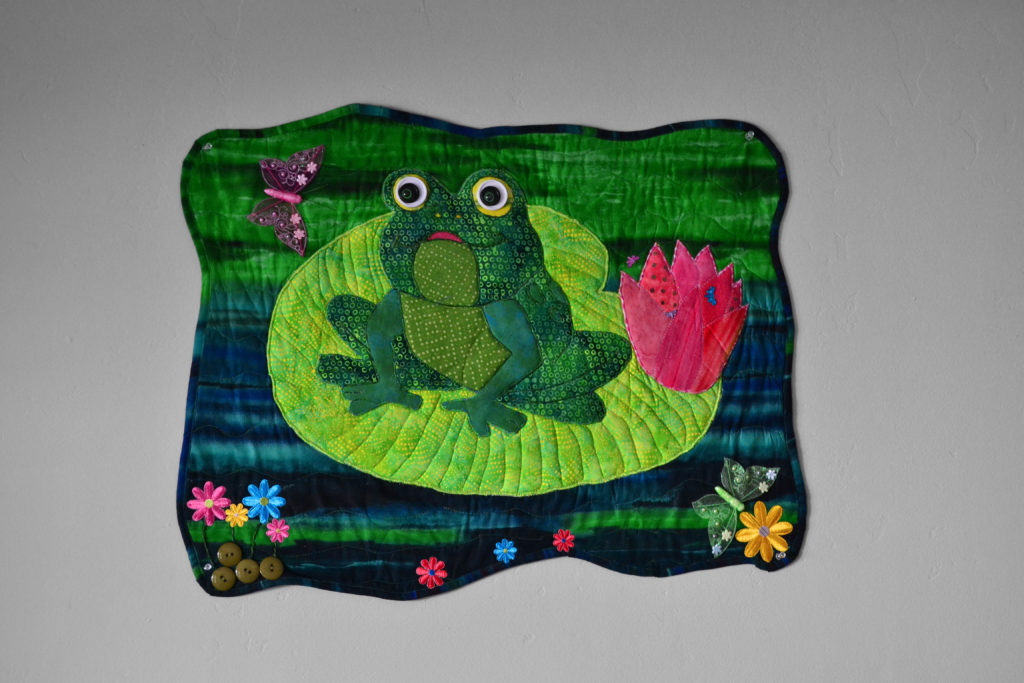
And that was how my Layer Cake Design Structure was born. You can see examples of this in ‘My Pad’ where the frog is trapuntoed up front as well as in my Christmas Bells Table Topper where both of the bells and the clappers are ‘foam-enhanced”. I just now made up that phrase – isn’t it great!
So there you have my trapunto journey, from the original, century’s long traditional way of doing it, to my quick, easy, and super-enhanced way.
Take a leap of faith and try it just once – I guarantee that you’ll love the results!
Karyl (aka Princess YellowBelly)
